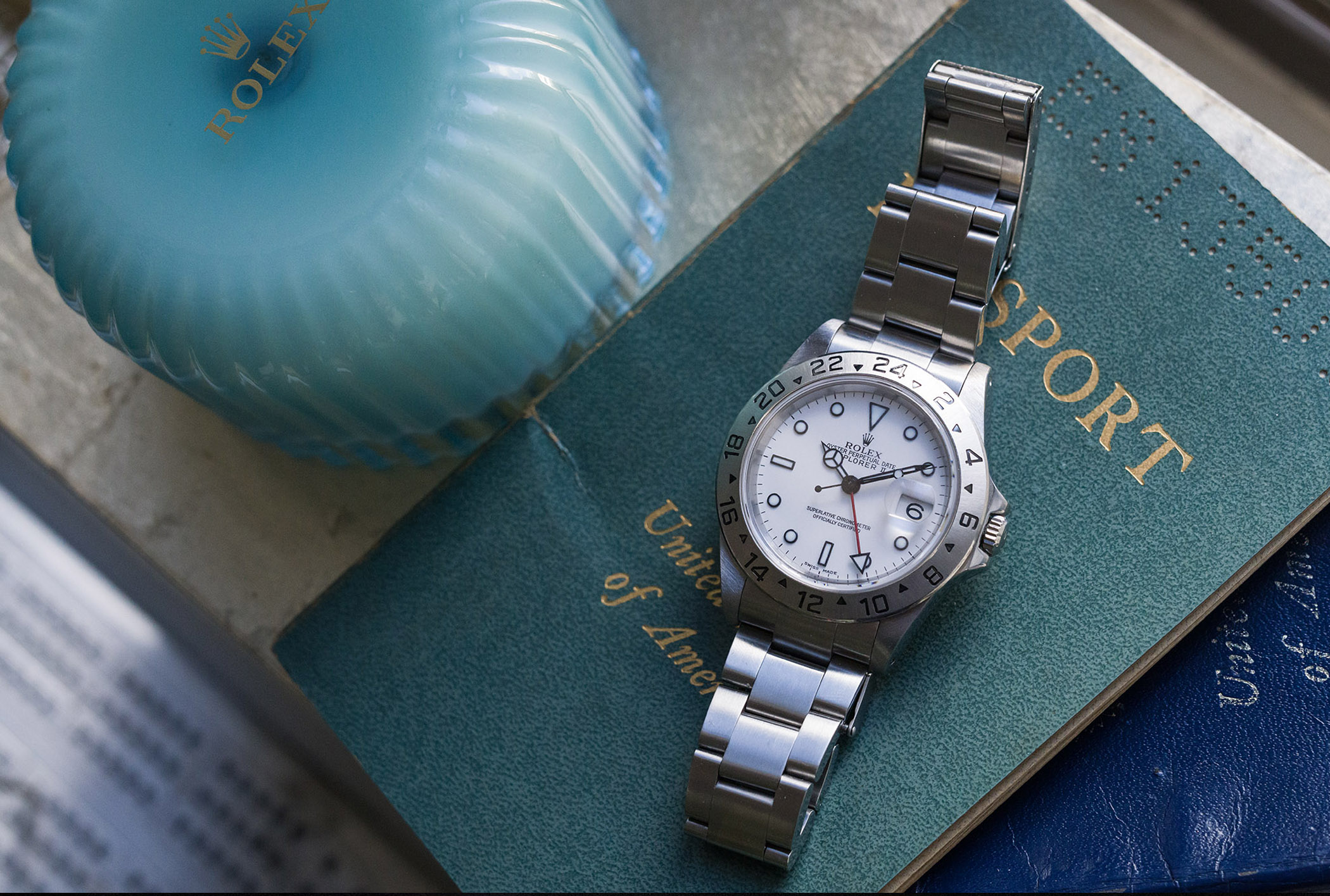There is one reference that seems to unite Rolex enthusiasts, and even many who would not classify themselves as such. Whatever your feelings on the Crown and its status these days, the Explorer II reference 16570 produced from the late ’80s to the early ’00s seems to have a certain undefinable character that makes it a quintessential high point, not just for Rolex, but for tool watches in general. This is a reference that represents a simple distillation of the qualities that put Rolex on the map, and as a result it seems to leave all the baggage at the door. This is just a damn fine GMT that begs to be used. It also happens to be a Rolex.
I’m not here to break down the history of the Explorer II, there are plenty of great places to get that kind of information if you’re so inclined (such as James Stacey’s Reference Points on the Explorer II in Vol. 8 of the Hodinkee Magazine). Instead, I’d like to take a closer look at the somewhat unsuspecting lasting appeal of this specific reference, and what its future may hold. Let’s jump in.
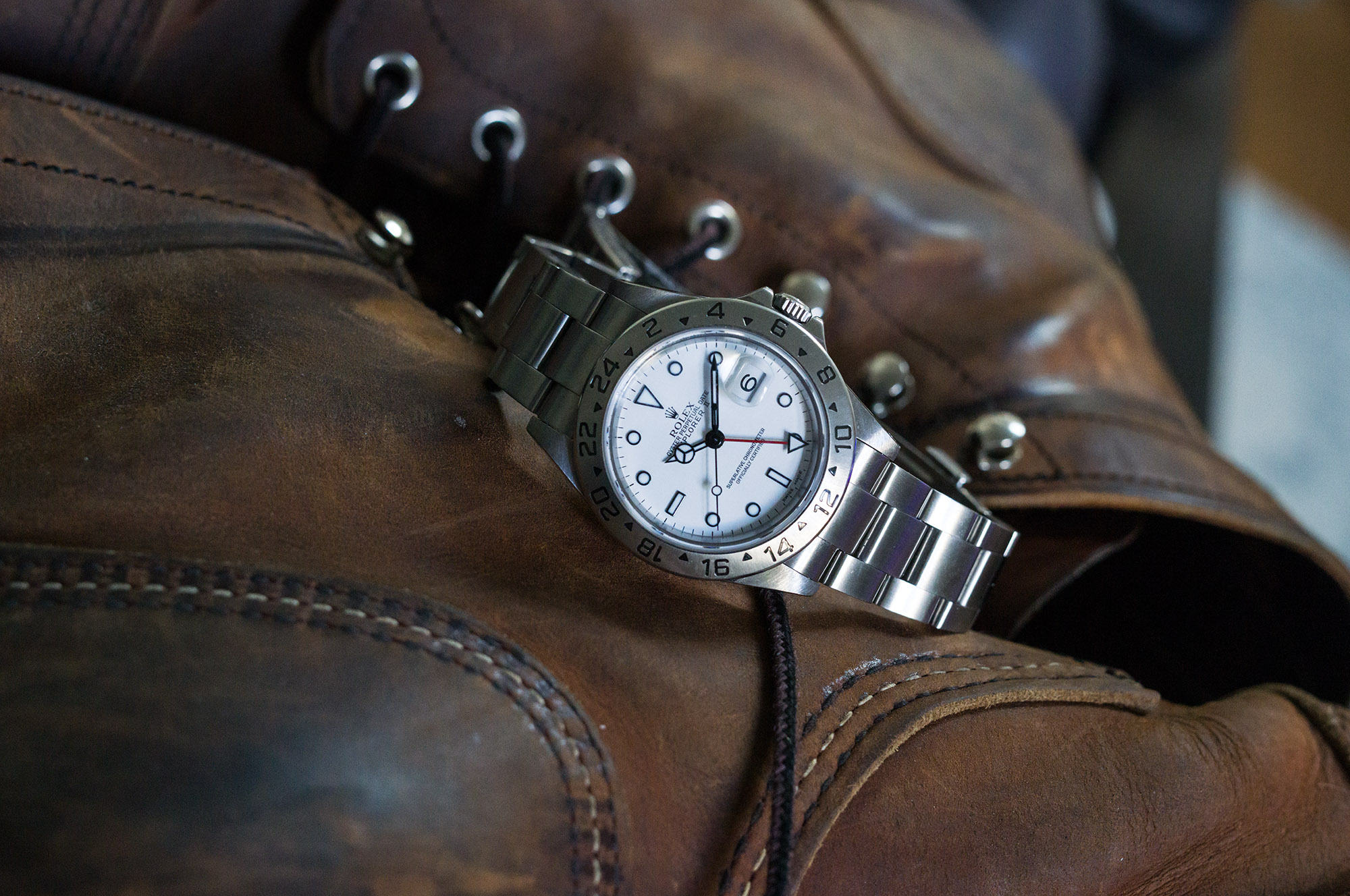
One of the many things that make Rolex unique is their long production cycles, and how single references tend to evolve over their lifespan. The 16570 might be the most prolific example of this thanks to its protracted production run through and around some serious transition periods for the brand. From the movements at use, to the bracelet and end-link design, to the dial configuration, and even the lume used on the hands and hour markers. There are a wide range of configurations for collectors and enthusiasts to choose from these days, but there’s a particular sweet spot that, for my money, best represents the reference, and its transition to a proper modern tool watch that is just as usable today as it was in the late ’90s.
Where some are driven by the aesthetic qualities of aged tritium and a neat and tidy “Swiss” only marking at the bottom of the dial, I’ve always advocated that would-be owners looking to actually wear and use their watches seek out the latest ‘holes’ case they can find. By that I mean a drilled lug, something that was phased out around 2003. This means you can find them with a solid end link, which is the single component you will likely notice (and appreciate) the most when it comes to this era of watches. Examples that fit this bill offer the best of the 5-digit (Rolex references that consist of 5 digits) experience for those not just looking to collect, but also to use on a frequent basis. (And yes, I forgo the newer movement for the look and convenience of the drilled lug.)
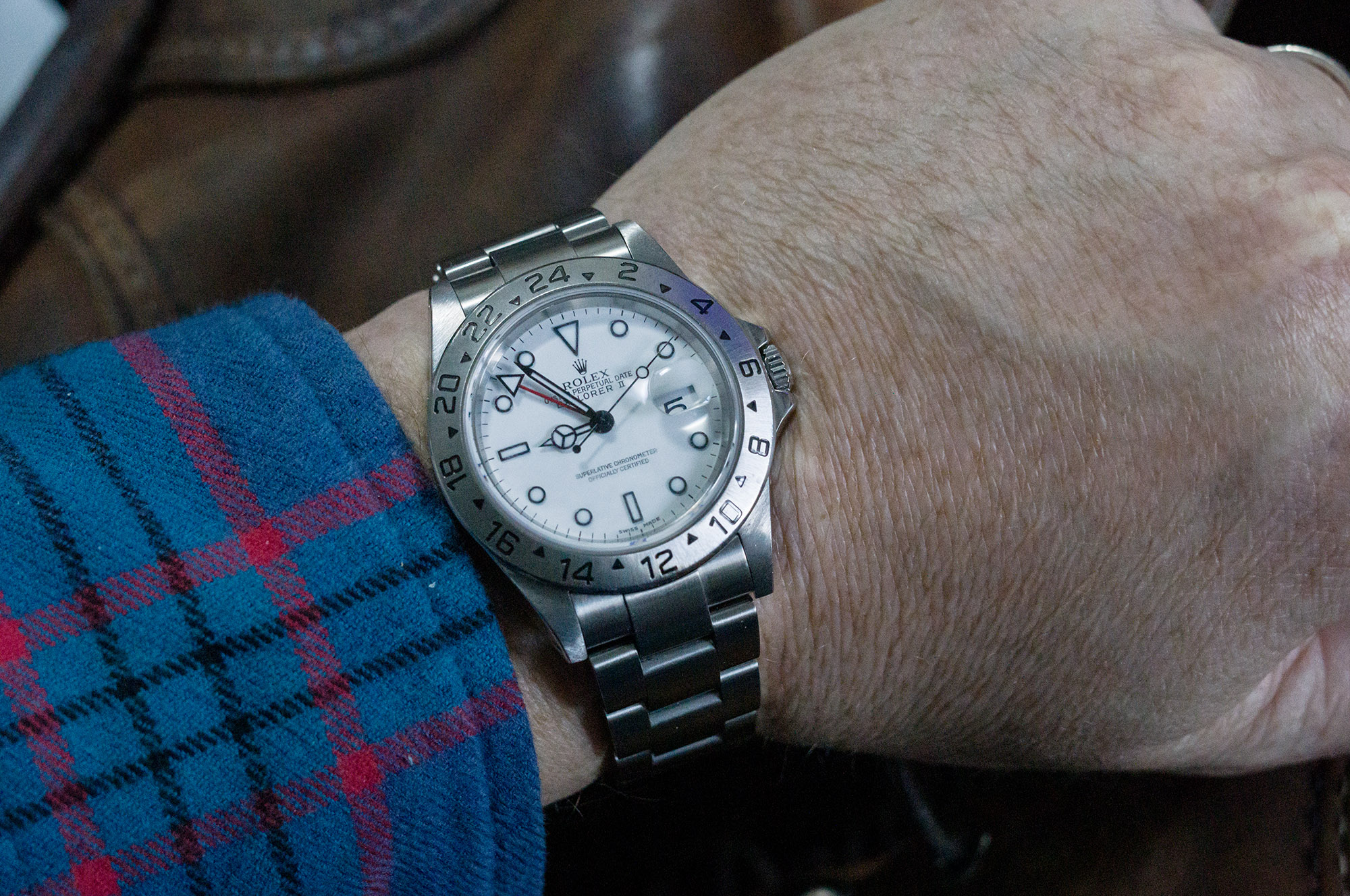
The 5-digit experience can best be defined by the cases that Rolex was making in this era. This comes after the thick domed crystals of the previous era, and before the ‘muscle’ cases of the proceeding generations. They offer an absolute masterclass in wearability, and are in many ways, still the bar by which I judge all watches claiming to be perfect ‘GADA’ (go anywhere, do anything) tool-ish options. Few manage it as well as Rolex did, and it’s a case construction ethos I’d dearly like to see them (or even Tudor, for that matter), return to.
I don’t place much stock in the measurements of a watch, opting instead for the overall wearability factor on wrist. On paper, the 40mm diameter by 47mm lug to lug (slightly less, in reality) and ~12mm thick case is pretty standard these days. However, slipping one of these on the wrist reveals something deeper that’s missed by those numbers, and that largely comes down to the shape and profile of the case walls and backside, which manage to nestle into the wrist in a manner that I can only describe as akin to your best, most worn-in pair of jeans.
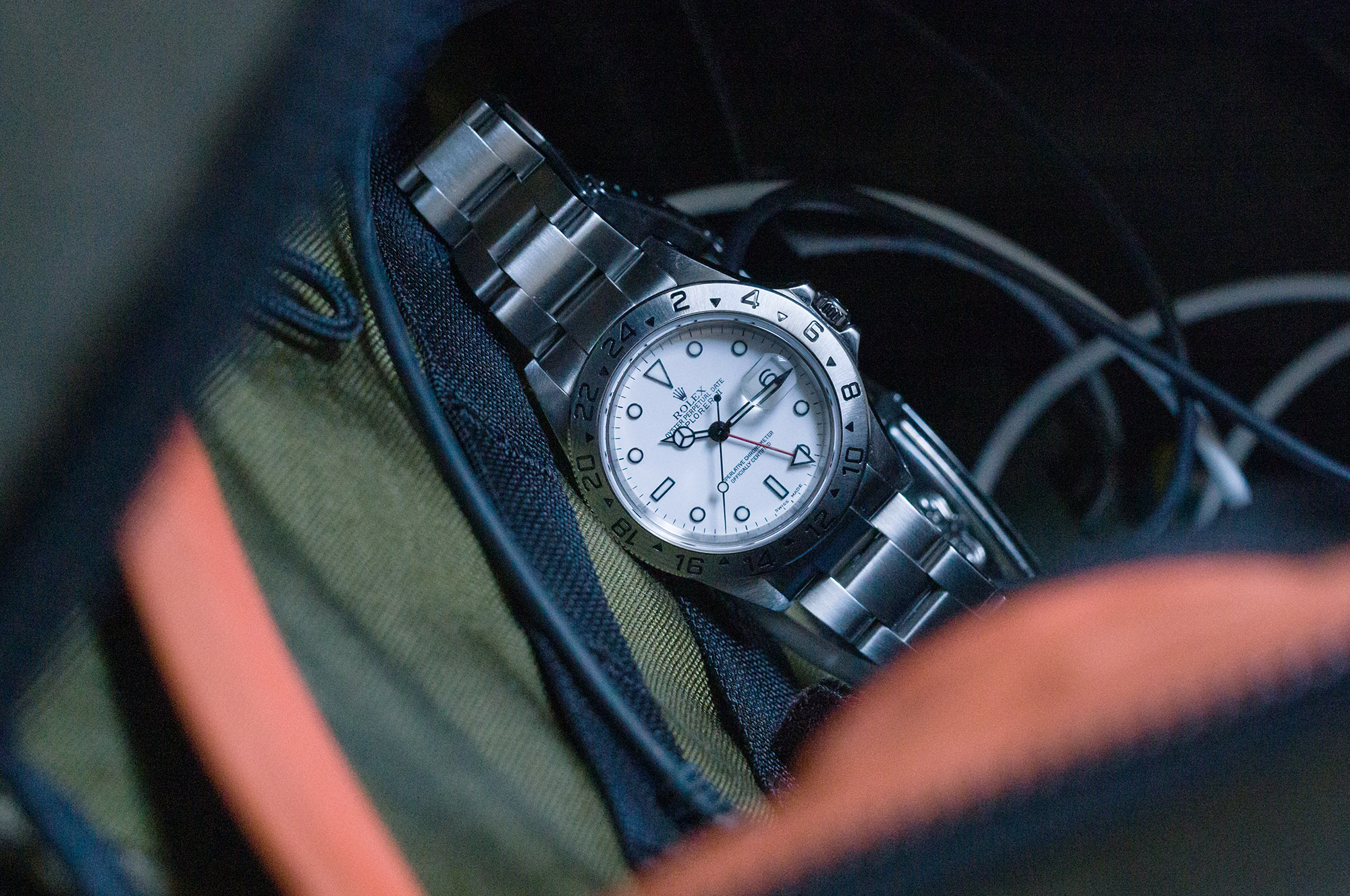
The 16570 in either black or white dial is a perfectly fine looking watch, and happens to take quite well to a wide range of straps. I wouldn’t call it beautiful by any stretch, but as far as tool watches go, it’s got plenty of charm. Loads were made during its production run, meaning there’s always a plethora of good examples available on the market, a fact that’s kept prices pretty consistent over the years. There’s nothing all that glamorous about it, so it’s not much of a status symbol beyond the fact that it is indeed a Rolex (and is still quite an expensive watch in the bigger picture). So why then has it remained such a cult favorite to this day?
There’s an anecdote I always come back to when I think about this question. Simply put, of all the enthusiasts and collectors I have encountered over the years, there are watches that I hear about coming back into a collection a second or third time, and more often than not, the chief example cited is the 16570. It all comes back to the experience of using it. This isn’t a watch to stick in the box and notch another part of the collection, it’s a watch that’s at its best in daily use, and once you’ve experienced it as such, it leaves a lasting impression. Because of this, the lore of the 16570 has taken many years to fully take hold. It’s qualities aren’t immediately apparent, but they are indeed rich to those who have put it to any use.
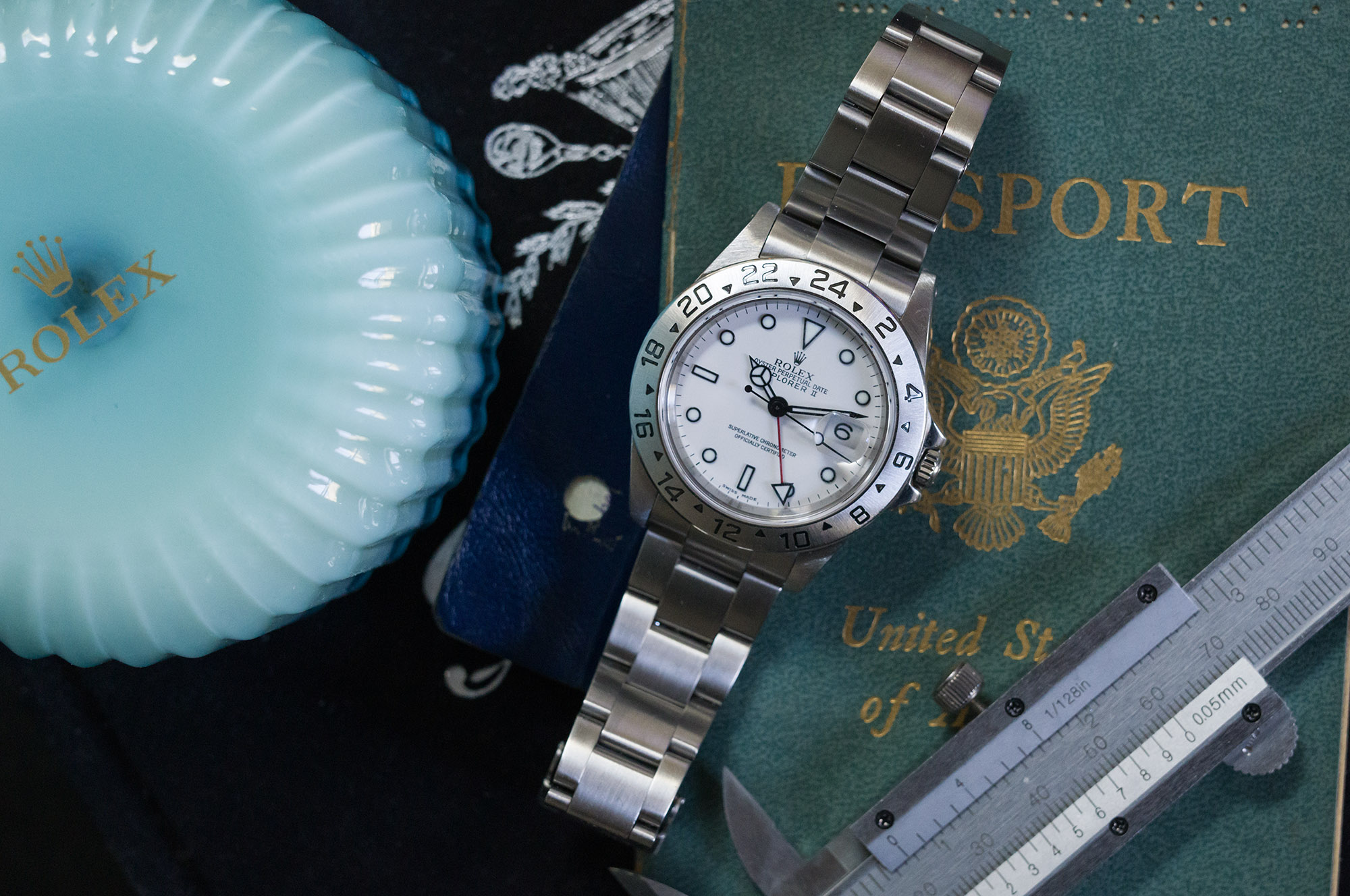
If you ask me, a watch is what you make of it. Modern Rolex watches are sometimes derided as no longer tools, but mere luxury objects, fawned over for their perceived investment value and status symbolism. And for some, they are just that. For others, they are still the tools that Rolex set out to make them. The 16570 has no pretension at all, and it cuts to the core of what makes a great daily tool. It’s approachable, straightforward and easy to use, and built like a truck. It embodies what many find sufficiently lacking in more modern offerings from Rolex. As capable as some of their modern references are, they certainly come with more baggage these days, but more importantly, the subtle qualities that make the 16570 such a lasting reference have been, for the time being, lost.

